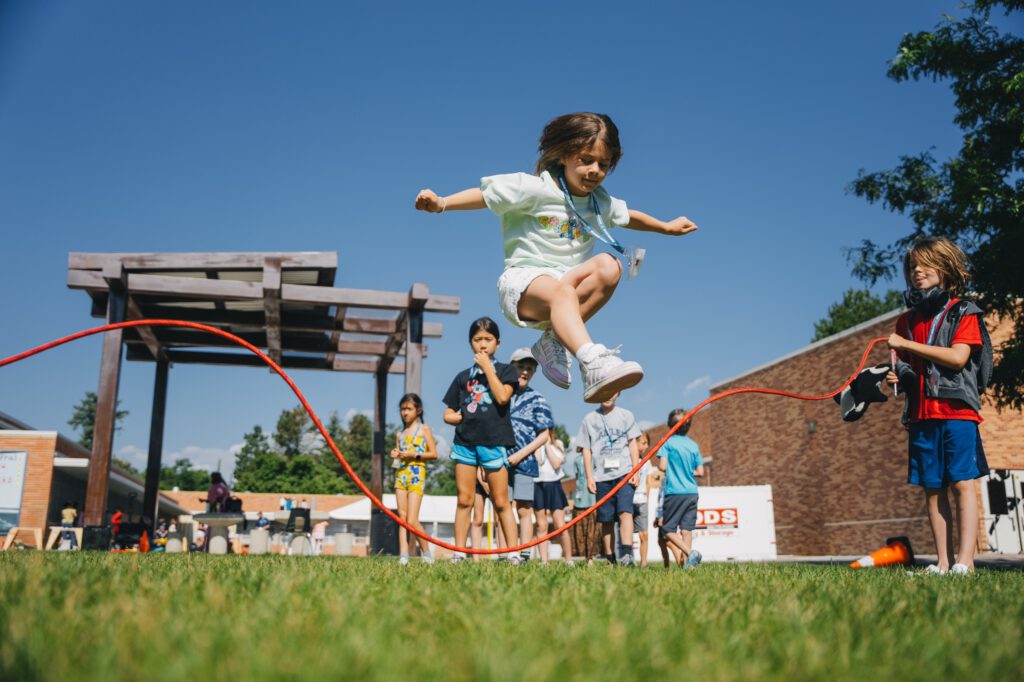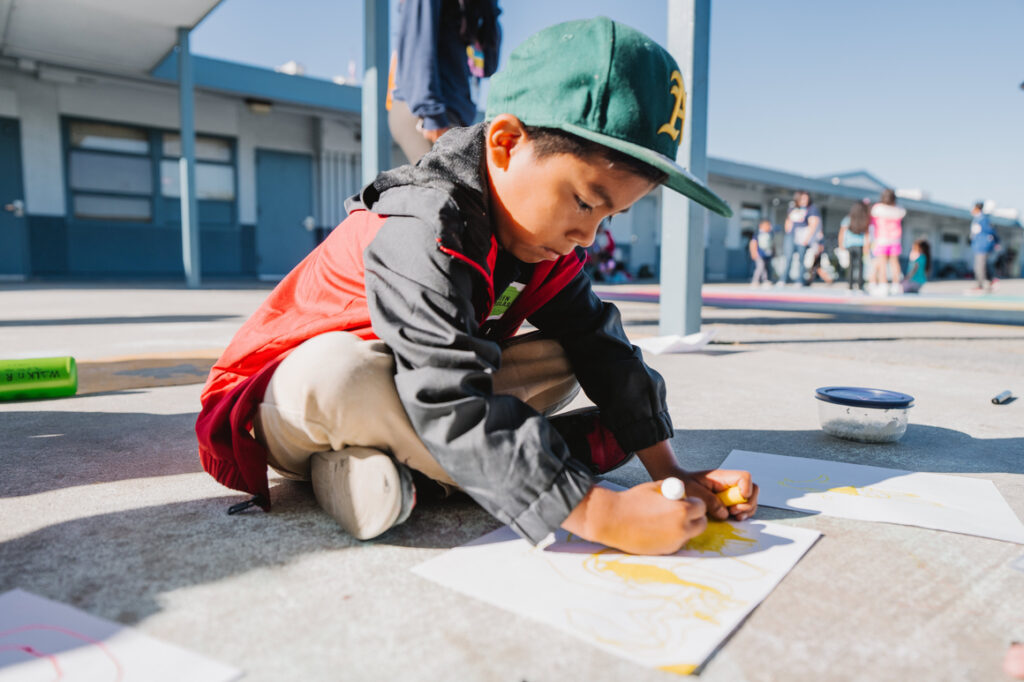Exploring fun art projects sparks creativity and enriches middle school art experiences. Giving children consistent access to artistic exploration and education is crucial to their intellectual and developmental success. With engaging ideas and activities, students can discover their artistic potential throughout the school year. In fact, recent studies into the efficacy of art-integrated curriculums show students perform better in other subjects—such as math, science, and English—when they routinely study art as well.
Unfortunately, many teachers believe middle school art lessons are being sidelined to accommodate other core subjects.
Luckily, school doesn’t have to be your child’s only outlet for artistic expression. There are plenty of fun, engaging art projects you can set up for your kids from the comfort of your own home. These simple projects are perfect for students of various ages and can be a favorite in any classroom. In this guide, we’ll outline four fascinating art activities for middle schoolers that utilize mediums such as watercolor and natural materials to stimulate their creativity and build their skills.
1 – Crumpled Paper Stained Glass
Stained glass combines the careful craftsmanship of expert glaziers with the brilliant light of the sun to create dazzling, colorful displays where we’d normally just place transparent panels.
Fortunately, you and your kids can easily capture this colorful spirit without having to travel to Notre Dame or St. Peter’s Basilica. This is not only a fun activity but an opportunity for students to explore visual creativity. And don’t worry—there’s no actual glass involved!
To get started on this quick and engaging project, gather:
- A standard piece of white paper
- A pencil or fine-tipped marker
- A collection of colored pencils or markers
After getting your supplies together, call your kids to the artist’s table and have them:
- Crumple up the piece of paper into a ball and unfold it to reveal the series of tiny lines, folds and fractures they’ve created.
- Trace along the newly-formed lines using their pencil or fine-tipped marker.
- Color in the mosaic of little shapes they’ve created using their colored pencils or markers. To achieve that signature stained glass look, avoid filling in two adjacent shapes with the same color.
After your child has colored in every last speck of white, their stained glass will be complete. Light won’t shine through it in the same brilliant way as a church window, but it will look stunning pinned to the fridge or whiteboard.
Challenging kids not to color two conjoining shapes the same shade will test their critical thinking and planning skills. Since one small crumpled shape can touch three, four, five or more others, they’ll have to carefully consider which color to make each one to avoid the same shade coming into contact with itself.
To test their critical thinking skills even further, limit your child’s pencil or marker choices so they’ll have to plan everything out before jumping into this project.
2 – Creating A Comic Strip
Creating comic strips is loved by middle school students, providing an exciting way to marry art and storytelling. This activity enhances creativity and is an engaging project that students will love. Professional comic artists carefully plot out their stories, design characters, and create captivating scenes to engage their audience.
For this project, your kids don’t need to be expert artists or storytellers. The goal is to have fun as they let their creativity flow. They can create a comic strip about anything they like, from superheroes and magical worlds to everyday adventures in their own lives.
This activity encourages students to develop their own stories and visualize them through comic art. To get started, they will need:
- A large piece of paper or several sheets taped together
- Pencils and colored markers or crayons
- A ruler to create panels
- Their imaginations to bring their stories to life
As they draw, kids can include dialogue, sound effects, and detailed backgrounds to enrich their stories. Incorporating patterns and unique designs can make each creation stand out. Encourage them to think about the flow of their story and how each panel leads to the next. This lesson not only improves their artistic skills but also enhances their storytelling abilities.
Creating comic strips can boost students’ problem-solving skills. They need to think about how their characters will overcome obstacles and resolve conflicts, fostering critical thinking and creativity. When they learn to visualize solutions, it encourages teaching through engagement.
Additionally, this project can improve children’s literacy and communication skills. Writing dialogue and captions requires them to use language effectively and think about how words and pictures work together to tell a story. This is an effective way to teach students to appreciate the art of combining visuals and narrative.
By engaging in comic strip creation, kids can:
- Enhance their artistic and storytelling abilities
- Develop problem-solving and critical thinking skills
- Improve literacy and communication
Creating comics is a versatile and enjoyable activity that provides numerous benefits, making it an excellent choice for sparking your child’s creativity and imagination.
3 – Watercolor with a Sprinkle of Salt
Through a process known as osmosis, salt has the interesting ability to draw water out of different solutions and surfaces to pass it through a permeable membrane. When you combine sodium chloride with water-based paints, you get some fascinating scientific and artistic effects. These experiments allow students to learn and try new painting techniques that they will love.
To get this playful painting project underway, first gather:
- A sheet of paper to paint on
- A variety of watercolor paints
- Table salt
- An easel, palette and brush
- A smock or some old clothing you don’t mind potentially getting stained
To begin, provide your middle schooler with the necessary painting supplies and let them set up their workspace as they would with any other art project. Clip the paper to the easel, and allow them to express themself on the canvas. Encourage them to try different techniques and explore their favorite styles. Colorful, abstract paintings work well with this project as colors will bleed and run once you apply salt—but any painting with a few distinct shades, shapes and lines will do wonderfully.
While this initial layer of paint is still wet, use a little water to saturate small portions of the paper. Then, take some more watercolor paint and apply it in pools over these wet segments. Finally, sprinkle some standard salt into these pools of paint and allow the whole piece to dry completely.
After all the moisture has dried, carefully brush off the excess salt, leaving a free and imaginative piece of art.
This one-of-a-kind project isn’t only an interesting take on standard watercolors—it also teaches kids some of the basic tenets of chemistry, including the different states of matter, how some solids are soluble in liquids and, of course, the aforementioned principle of osmosis.
4 – Harness Natural Materials to Unleash Your Child’s Artistic Side
When it comes to crafts for middle schoolers, collecting your own natural materials really ramps up the fun and engagement factor.
This project doesn’t begin with a piece of paper, pack of pencils or palette of paint. It starts with a relaxing walk through your local forest, park, meadow or other greenspace. Take your teen with you and, along the way, encourage them to gather a variety of items that they can later use to make an art project.
Some things you may want to consider picking up include:
- Rocks, stones and pebbles
- Sticks, branches and twigs
- Fallen leaves
- Grass
- Old tree bark and other shedded plant parts
Make sure to only pick items up off the ground, and don’t harm any live plants in the collection process. Once you’ve gathered a hefty cache of supplies, take it back home and let the fun begin!
Like many aspects of art, there are few rules when it comes to utilizing natural materials. You may want to supplement your child’s set of supplies with some traditional materials such as paint, glue and paper but, other than that, it’s best to let their creativity run wild! To get the ball rolling, you may suggest:
- Tying several twigs together to use as a brush
- Dipping leaves in paint and stamping them down on paper
- Gluing small rocks together to form a tiny statue
- Other, similar activities
Utilizing natural materials encourages your child to think outside the box and reconnect with nature in the process. This ensures that the lesson aligns with environmentally friendly principles. It allows them to consider how we can use our planet’s resources in a way that doesn’t harm the environment. Such projects are perfect for encouraging innovation and creativity. And, perhaps most importantly, it reminds kids that art isn’t about expensive easels, bountiful supplies or specific instructions—it’s about creativity, inspiration and harnessing an innovative mindset to create something magical out of humble materials.
Enhance Your Child’s Artistic Abilities by Enrolling Them at Camp Galileo
Planning fun art projects for middle schoolers certainly helps them improve their creativity and artistic abilities, but it also takes significant resources and effort to do right. As a parent, you may feel too busy, yet free resources are available to engage your child in painting lessons.
For a more structured and enriching experience, consider programs like Camp Galileo’s Meteor program, where campers engage in weeklong projects that incorporate art and design elements. These projects not only teach hard skills but also foster creativity, vision, and perseverance, providing a comprehensive and impactful learning experience for your child.
Artistic exploration is at the heart of our esteemed summer programs, but so are Science, Technology, Engineering and Math skills, as well as collaborative play. At Camp Galileo, we empower kids to believe in themselves and cultivate their creative thinking so they can grow up to be innovators who seek to make the world a better place. At the same time, we offer all the benefits and fun of a traditional summer camp experience—enhanced to be even more engaging and exciting.
Offering free exploration time makes every lesson more engaging. Explore our summer camps in California, Colorado, Chicagoland, and Seattle! We have Camp Galileo locations across many communities. Browse our camp locations to find one nearest to you, and enroll soon to secure a summer of discovery and fun for your child.
Sources:
- Science Direct. The effects of arts-integrated instruction on memory for science content. https://www.sciencedirect.com/.
- Americans for the Arts. 10 ARTS EDUCATION FAST FACTS. https://www.americansforthearts.org/
- The Art of Education University. 5 Successful One-Day Art Lessons for the Middle School Classroom. https://theartofeducation.edu/.
- Edutopia. Using Art to Help Students Find Their Calm. https://www.edutopia.org/.
- PBS KIds. Why Children Still Need to Read (and Draw) Maps. https://www.pbs.org/.
- National Assessment of Educational Progress. NAEP Report Card: Geography. https://www.nationsreportcard.gov/.
- Scientific American. Make a Potato Shrink–with Saltwater. https://www.scientificamerican.com/.
- The Art of Education University. 8 Nature Inspired Art Activities. https://theartofeducation.edu/.



